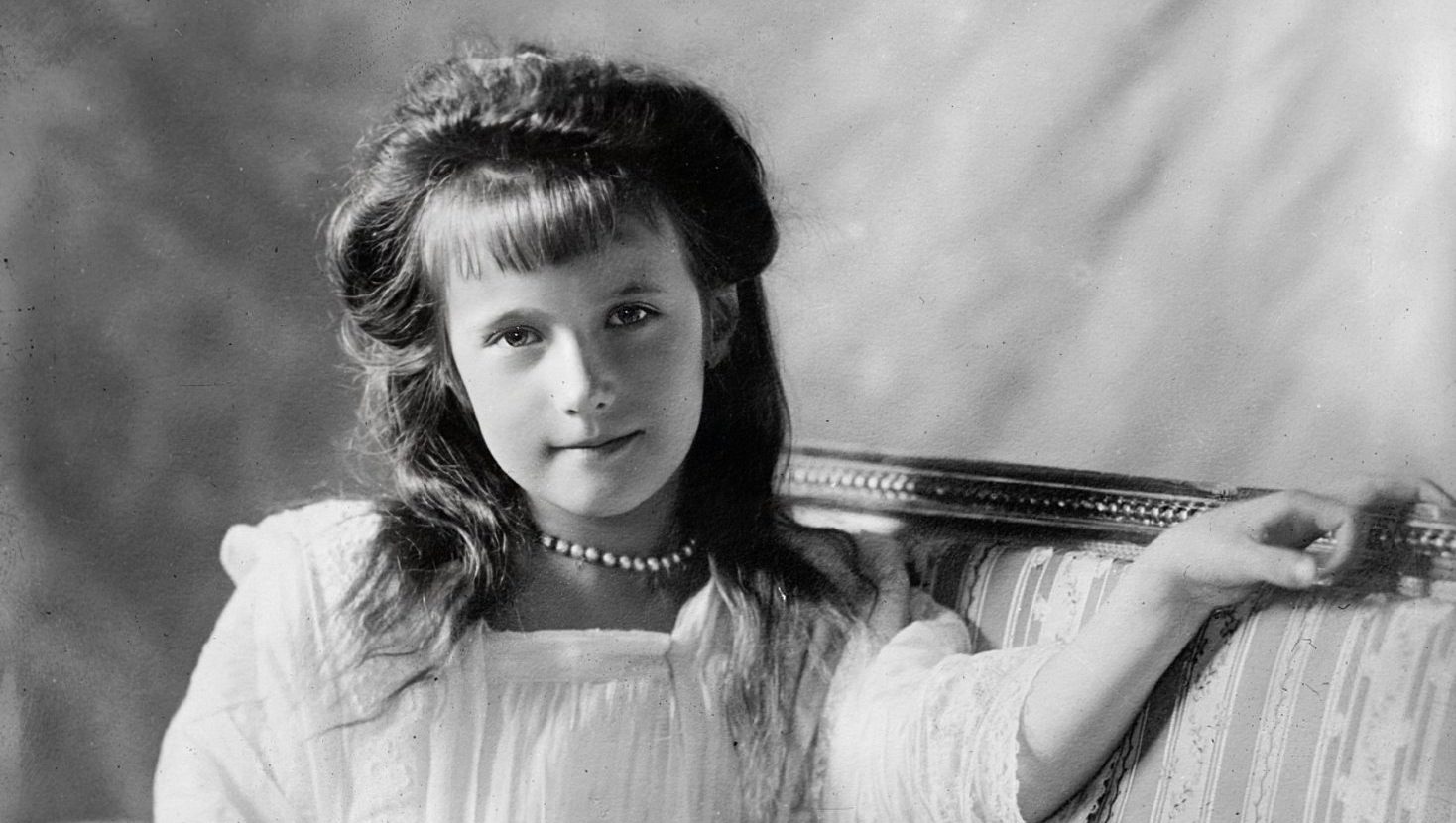When, one humid summer night at the Peterhof Palace in St Petersburg, Tsar Nicholas II was informed that his new fourth child was also his fourth daughter, he said nothing, stood up and left for a long, silent walk around the palace grounds. By the time he returned, the news had been telegraphed around the world.
“Tsar has another daughter,” said the New York Times. “Russian people again disappointed in their hope that an heir to the throne might be born.”
The wife of an American diplomat recorded how the birth of Grand Duchess Anastasia “created such indescribable agitation in a nation clamouring for a boy”, while Grand Duchess Xena greeted the arrival of her niece by exclaiming: “My God, what a disappointment”.
If her arrival was inauspicious, Anastasia’s death was a travesty that triggered a posthumous legacy as one of history’s most tragic enigmas. She was never destined to have much agency in her own life, but having been greeted at birth by a melancholic sigh heard around the world, even her death would not be her own.
It was another warm summer night a month after her 17th birthday when Anastasia, her parents and her four siblings – including the longed-for heir Alexei who had followed her into the world three years later – were roused just after midnight and told to dress quickly. They had been under house arrest since the Russian Revolution of February 1917 that forced Nicholas’s abdication and had recently been moved to a requisitioned merchant’s house in Yekaterinburg in Siberia while the Bolshevik Reds and counter-revolutionary Whites fought for control of the country.
The Whites were approaching the city, the family was told, and the Romanovs were being moved to a new, safer location. Long adapted to reduced circumstances they went willingly, if blearily, following their guards across the courtyard to a bare basement room lit by one dim electric lightbulb. The Tsarina, who walked with a stick, noted there were no chairs to sit on and one was provided for her and the sickly, haemophiliac Alexei.
Anastasia and her sisters gathered behind their mother as Nicholas lifted Alexei gently on to the chair and stood with his back to the room, facing his family. A door opened and more soldiers filed in. Yakov Yurovsky, the commandant in charge, addressed the former Tsar.
“Nikolai Alexandrovich,” he said, drawing his revolver and signalling to his colleagues to do likewise. “In view of the fact that your relatives abroad are continuing their attacks on Soviet Russia, the Ural Executive Committee has resolved to shoot you.”
Nicholas, eyes widening, turned towards Yurovsky.
“What?” he said.
Anastasia’s life, brief and cloistered, is ill-recorded in a few surviving letters and small glimpses recalled by those who encountered her. Like her sisters, she was destined for little more than a politically expedient marriage incubating future nobility, but her early death leaves her eternally young, as vivid only as a series of vignettes of childhood exuberance and adolescent wilfulness can make her.
Of the four sisters she was the mischievous one, “witty, vivacious, hopelessly stubborn, delightfully impertinent, and in general a perfect enfant terrible” according to one member of the royal household.
Before the revolution she had, along with her sisters, visited soldiers wounded on the eastern front of the first world war who were recovering in the hospital on the grounds of the royal residence in St Petersburg. Anastasia was popular with the patients, happily playing chequers and billiards with them, one injured officer later recalling how she had a “laugh like a squirrel” and would bustle through the wards “as though she tripped along”. She enjoyed saucy jokes, impersonating her governesses, climbing trees and refusing all entreaties to come down. As a young child she enjoyed word games, which she turned later into a love of writing plays performed by her and her sisters for their delighted parents.
Even during the last weeks of her life, a guard at the Yekaterinberg house would recall her as “very friendly and full of fun”. Another remembered how “she was lively, mischievous and fond of performing comic routines with the dogs, as though they were performing in a circus”.
On the day before their deaths the sisters had helped some women sent in to clean the house, Anastasia thumbing her nose and sticking her tongue out at Yurovsky when he turned away after ordering them to be silent.
“They were cheerful, and not only helped move the furniture, they got down on their knees and washed the floor with us,” one of the women recalled.
The execution of the Romanovs was clumsy and chaotic, the single lightbulb dulled to darkness by gunsmoke and plaster dust that left the executioners stumbling and choking into the corridor outside.
The bodies of Anastasia, her family and the four members of their household staff who died with them were loaded on to a truck, thrown down a well that proved too shallow to accommodate nine corpses, then buried in two graves by the side of a road.
While the Soviets announced that the former Tsar had been executed it was several years before the fate of the rest of the Romanovs was confirmed, inadvertently encouraging a host of rumours and a clutch of impostors. Within 18 months of the executions, four women were masquerading as Anastasia’s older sister Tatiana and no fewer than 14 purported Anastasias were claiming to have escaped their captors.
It took modern DNA testing to confirm as recently as 2007 that Anastasia had died with her family in the hellish chaos of that basement room in the summer of 1918. Before that, one fake Anastasia in particular had captured public attention for almost the entire 20th century.
In 1920, a young woman was pulled out of a Berlin canal and placed into an asylum where a rumour began to circulate that she was first Tatiana, then Anastasia. Despite bearing no physical resemblance to the Grand Duchess and being clearly older, not to mention speaking neither Russian nor the French in which the Romanovs were fluent, she was held up by supporters as being the former Tsar’s fourth daughter, a story that persisted after the woman’s death in the US in 1984 under the name Anna Anderson. In fact she was Franziska Schanzkowska, a Polish factory worker with a history of mental health issues who was completely unconnected to Anastasia.
Born into privilege she may have been, but Anastasia’s short life and awful death remain one of the great tragedies of the 20th century. The feisty, cheerful, mischievous teenager whose dubious destiny as a politically convenient spouse was wiped out in a hail of bullets and blindly slashing bayonets lingers only in snatches of anecdote by the long dead, her fame forged by imposters, the truth of her brief life a fleeting transition from disappointment to murder.
“Goodbye,” she wrote to a friend ahead of the move from the comparative luxury of Tobolsk to the spartan house in Yekaterinburg at Christmas 1917. “Don’t forget us.”




